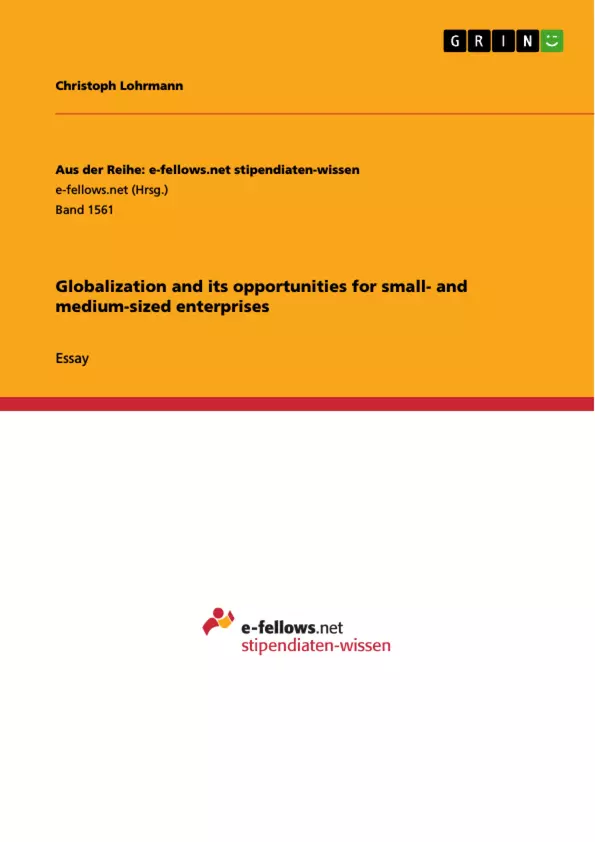Small- and medium-sized companies (SMEs) represent about 95% of enterprises in Europe, with a high amount of small companies ranging between 22% - 66% as well as high importance all over the globe. Nevertheless, the sector of SMEs has been ignored and poorly understood for many decades. Eventually, a research conducted by the economist David Birch published in 1979 revealed that especially SMEs are responsible for economic growth in general and are the prime source for job creation, accounting for up to 60% of the overall employment.
As a result, the OECD considers them to be the core for economic growth and the dominant form of businesses worldwide in the future, acknowledging the importance of SMEs within global economy. Knowledge about small- and medium-sized enterprises has become even more important due to the fact that the interest of small firms to operate on foreign markets increased in the last decades.
This essay depicts the characteristics of small- and medium-sized companies, compares it to multinational companies (MNCs) to determine advantages as well as disadvantages and, finally, examines certain opportunities for SMEs offered by globalization and internationalisation.
Inhaltsverzeichnis (Table of Contents)
- Characteristics of SMEs
- Comparison of SMEs and MNCs
- Opportunities for SMEs offered by Globalization and Internationalization
- Differentiation Strategy
- Customization
- Innovation and Response
Zielsetzung und Themenschwerpunkte (Objectives and Key Themes)
This essay aims to examine the opportunities that globalization offers to small- and medium-sized enterprises (SMEs). It will first analyze the characteristics of SMEs and compare them to multinational companies (MNCs) to identify their advantages and disadvantages. Finally, the essay will explore specific opportunities for SMEs in the context of globalization and internationalization.
- The characteristics of SMEs and their differences from larger companies
- The advantages and disadvantages of SMEs compared to MNCs
- The opportunities for SMEs presented by globalization and internationalization
- The importance of differentiation, customization, and innovation for SME success
- The role of SMEs in driving economic growth and job creation
Zusammenfassung der Kapitel (Chapter Summaries)
The first chapter defines SMEs based on quantitative and qualitative measures, highlighting their resource limitations and dependence on local markets. Chapter two compares SMEs to MNCs, emphasizing the resource advantage of MNCs and their ability to achieve economies of scale. The third chapter explores the opportunities for SMEs in the face of globalization and internationalization. It argues that SMEs can leverage differentiation, customization, and innovation to compete effectively with larger companies, particularly in niche markets.
Schlüsselwörter (Keywords)
The essay focuses on the key themes of small- and medium-sized enterprises (SMEs), multinational companies (MNCs), globalization, internationalization, differentiation strategy, customization, innovation, niche markets, and economic growth.
- Citar trabajo
- Christoph Lohrmann (Autor), 2013, Globalization and its opportunities for small- and medium-sized enterprises, Múnich, GRIN Verlag, https://www.grin.com/document/304739



